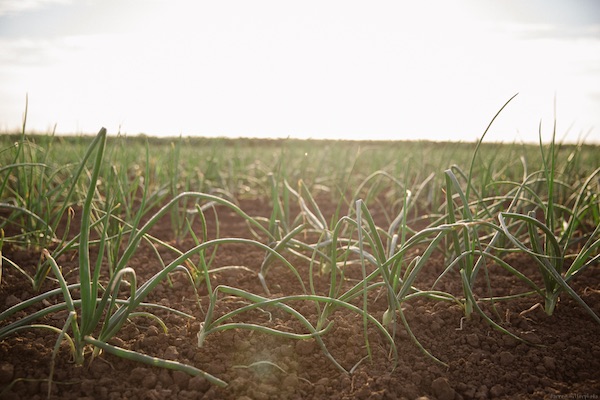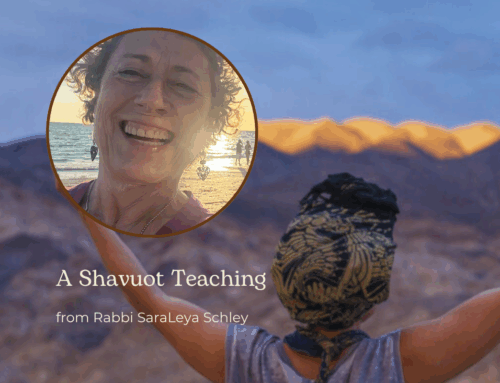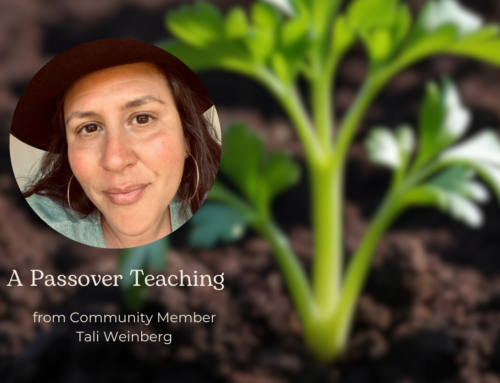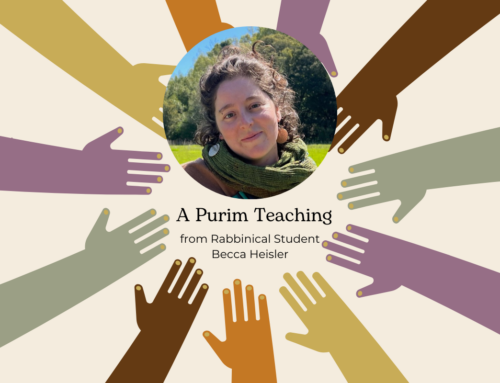Love and Rebuke, Shmita and Our New Story — Parhot Be-Har and Be-Hokkati
22 Iyyar 5777 | May 18, 2017
By Maggid Zelig Golden
In this week’s parsha Be-Har (on the mountain) and Be-Hukkotai (by my decrees) we are first given the agricultural law of Shmita, a Sabbath for the land. “Six years you may sow your field and six years you may prune your vineyard and gather the yield. But in the seventh year the land shall have a Sabbath of complete rest.” (Lev. 25:2-4) In lieu of working the land, we are told to eat what the land produces without effort, and give freely of the bounty to all who are hungry.
Parsha Be-Har also gives us the Yovel (Jubilee) — a complete release of all land ownership and release of all servants every fifty years. (Lev. 25:8-10) “Seven times seven years — so that the period of seven weeks of years gives you a total of forty-nine years … and you shall hallow the fiftieth year … You shall proclaim release throughout the land for all its inhabitants.” (Lev. 25:8-10)
It’s no coincidence that we are given Shmita and Yovel during this holy time of counting the Omer.
From Passover’s redemptive passage through the narrowly parted sea to Shavuot’s revelatory climb to the top of the expansive holy mountain, we count forty-nine days, reflecting for one week on each of seven mystical sefirot (attributes), refining our spiritual and emotional attributes in preparation for receipt of the Torah.
The “Omer,” literally a Biblical measure of grain, exemplifies the direct correlation of our spiritual refinement to our connection to the land and all that it provides. In recognition of the holy partnership between God, the earth, and humans, it was traditional on Shavuot to offer two loaves of bread at the Temple.
Shmita is the ultimate expression of this divine relationship. The Torah teaches that if we obey the tradition of giving the land its Shabbat, we will live upon the land in security and abundance. (Lev. 25:18-22) The root of Shmita means “release.” Thus, to fully live in abundance, we must let go. Whether literally or in our hearts, we must relinquish ownerships and drop away our materialism. We must let those we enslave go free, including ourselves. Unencumbered, we can then climb the holy mountain of self-reflection and self-discovery, and surrender with faith to the truth of lives. This is the essence of receiving “Torah.”
Shmita provides a powerful paradigm for our people. In this time of ecological uncertainty and global injustice, Jews across the world are stepping toward the task of embracing shmita and the profound values it professes. Our friends and partners at Hazon have created an incredible set of resources that explore the Biblical sources and lineage of thought about shmita. I highly encourage you to explore these invaluable resources at the Shmita Project.
Yigal Deutscher has also articulated a powerful Shmita vision through 7Seeds, which expresses a shmita consciousness that weaves the principles of permaculture, indigenous consciousness, and transition town activism into a holistic system based on ancient Jewish values. As he explains:
These are potent times of transition, from perceived scarcity to revealed abundance, from the age of the individual to the age of the communal…. In this momentum of growth, there is a stirring and rising of the ancient memories planted deep inside us from the wisdom and tales of our early ancestors. In this timeless story, there is a code which lays out the vision for a sacred community that is grounded in abundance, equality, generosity, love, and the ability to have trust in the unknown. This code is held within the shmita cycle.
Yigal explains that shmita is not only about the seventh year. Rather it indicates how we might conduct ourselves during the six years preceding because shmita is a holistic cycle rather than an isolated moment in time. What would it be like if in the seventh year we really could rely on our agricultural systems to feed us with no planting, weeding, and pruning? What would our farms look like? How can the modern art of permaculture support this ancient way? What if we really could live in a gift economy and release our debts in the seventh year? What would it take during the six years preceding shmita to make such a world possible? I encourage you to explore Yigal’s Shmita Manifesto, a beautiful articulation of the potential of shmita for our time and for what I think provides the most potent answers to these questions.
The values of Shmita directly relate to the core teachings of Wilderness Torah. Each Passover, for example, we gather in the desert and spend solo time with ourselves in the wilderness. Before we go, we ask the question found in the Midrash: “Why was the Torah given in the wilderness of Sinai?” The Midrash teaches that unless the people make themselves hefker (ownerless) like the wilderness (and yes, just like the food during Shmita), they would not be able to attain the wisdom of the Torah.” (Bamidbar Rabbah 1:7) So, too, making our food and property hefker like the wilderness provides a powerful key to our personal evolution and the transformation of our fundamental relationships. As Yigal explains in the “Shmita Manifesto”:
To leave land fallow is not simply to pause, or to create a static snapshot in time. It is to allow for a period of transformation and renewal. When we step aside, the land responds, and she does so by expressing her untamed, wild self, recalling a period beyond domestication, beyond civilization…shmita offers us a delicate edge where our two identities, our civilized and wild reflections, can meet and merge together, in union and love.
The Shmita teachings from Be-har, the great vision from atop the mountain, is accompanied by the very real and terse decrees from the companion Parsha Be-Hukkotai. There is a stark corollary here where Torah reflects for us that severe consequences may befall us when we fail to remain in right relationship with our world as prescribed by the sacred laws contained in Shmita and Yovel.
If you follow my laws and faithfully observe my commandments, I will grant your rains in their season, so that the earth shall yield its produce and the trees of the field their fruit. (Lev. 26:3-4) … You shall eat your fill of bread and dwell securely in your land. (Lev. 26:5)
But if you break my covenant … you shall sow seed to no purpose … I will make your skies like iron and your earth like copper … Your land shall not yield its produce, nor shall the trees of the land yield their fruit. (Lev. 26: 15-19)
In very stark terms we are instructed that how we conduct ourselves here on earth has real consequences. This same teaching is echoed with the Shema. The second portion of the Shema takes us directly into the relationship between our conduct and rain. “If you follow My commandment … to love … with all your heart and with all your soul,” the Shema continues, “then I will provide rain for your land in its proper time, the early and the late rains, that you may gather in your grain, your wine, and your oil” (Deut. 11:13-14). The Shema next explains that if one fails to follow this commandment, then “there will be no rain.” (Deut. 11:17)
Is it possible that our love can bring the rain? Is this a mystical idea or an earthly truth? Perhaps the love the Torah points to here is a practical love. How we eat, what we drive, how we consume — these can all be done with love for the earth and the conduct required to truly exemplify that love. What does that look like? Are we really willing to take a hard look at this?
It has become common practice by some Jewish communities to excise this second paragraph of the Shema, such as the Reconstructionist siddur Kol Haneshama and many Jewish Renewal siddurim. I understand the impulse to reject the harsh, pedantic God voice of Deuteronomy. I want to argue, however, that perhaps this voice is needed more than ever.
Reb Zalman summarized this well when he wrote, “the Earth is in a dire crisis for survival, and we have as yet no means to re-dream our hoped-for story. We have faced a historic turning point — the millennium. There is a need for visioning the future of human spirituality in harmony with our Gaian understanding.” (“Renewing God Model,” Tikkun 2001) In order to re-dream our hoped-for story, as Reb Zalman so beautifully invites us to do, we have to get real with the times we are in and the challenges we face in our relationship to Gaia, our living Earth.
Be-har and Be-Hokkatai provide critical parts of our cultural map that we must take seriously in creating our new story, a vision that we actually perform on earth that takes the next seven years, seven Shmita cycles, and seven generations truly to heart.





